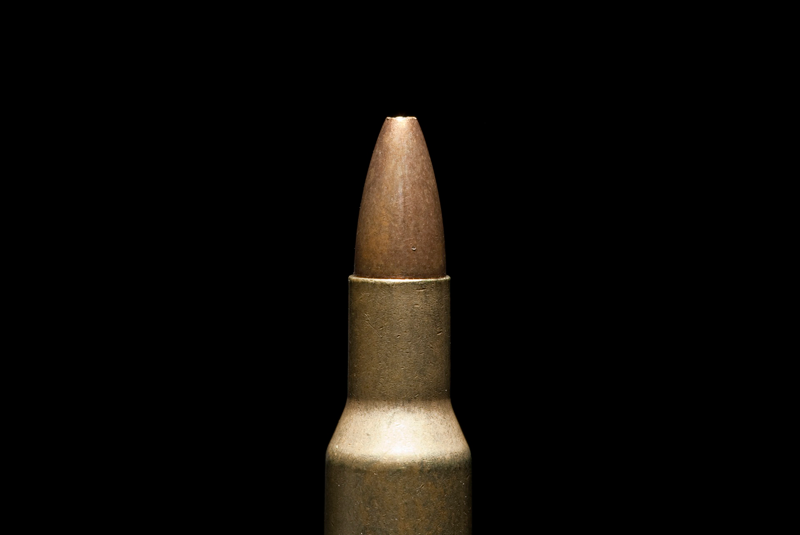The ability to keep a large store of resources for a crisis event is crucial for preppers. Most survivalists make a habit of keeping a decent stockpile on-hand, but they relish the ability to double down by visit local retailers if they see warning for a major situation on the horizon.
However, it looks like it might be getting harder to rely on the ability to run to the grocery store and stock up to add to your survival pantry. In fact, it might be wise to assume that major retailers won’t be a source of security leading up to a SHTF event, cause their inventories appear to be shrinking.
SHTF Plan explains:
Sometimes good comments are worth an entire article. This author is a big believer in the fostering of good, intelligent dialogues with commenters on these various alternative media sites. We all have the ability (with comments) to function in the manner of unofficial reporters. The nation is huge; however, the distance is nominal and the situations that arise in the nation as a whole can be chronicled and reported by we, the average citizens. The comments and interactions are a means to that end.
In this light, I wish to ask you, the Readership to report on this important topic in order to present others with the situations taking place in their locales. The topic referred to being declining inventories and a lack of purchases to meet with customer (I despise the word “consumers”) needs in terms of foodstuffs and nondurable goods.
I came across two excellent comments upon Steve Quayle’s website that bear reading, as these are two people with experience in retail marketing, inventory, ordering, and purchases. Take a look at these:
#1 (From DJ, January 24, 2016)
“Steve-
[Regarding the] alerts about the current state of the RR industry. This is in line with what I’ve been noticing as I visited our local/regional grocery store, Walmart, and Target this week in WI. I worked in big box retail for 20 years specializing in Inventory Management. These stores are all using computerized inventory management systems that monitor and automatically replenish inventory when levels/shelf stock get low. This prevents “out of stocks” and lost sales. These companies rely on the ability to replenish inventory quickly from regional warehouses.
As I shopped this week and looked at inventory levels I was shocked. There were numerous (above and beyond acceptable levels) out of stocks across category lines at all three retailers. And even where inventory was on the shelf, the overall levels were noticeably reduced. Based on my experience, working for two of these three organizations in store management, they have drastically/intentionally reduced their inventory levels. This is either due to financial stresses/poor sales effecting their ability to acquire new inventory, or it could be the result of what was mentioned earlier regarding the transporting of goods to these regional warehouses. Either way this doesn’t bode well for the what’s to come. Stock up now while you can!”
#2 (From a Commenter following up #1 who didn’t provide a name, January 26, 2016)
“I’d like to tailgate on the SQ Alert “based on my experience…” regarding stock levels in big box stores. This weekend we were in two such stores, each in fairly isolated communities which are easily the communities’ best source for acquiring grocery items in quantity.
I myself worked in retail (meat) for thirty years so I know exactly what a well-stocked store looks like, understand the key categories and category drivers, and how shelves are stocked and displays are built to drive sales and profits. I also understand supply chain and distribution methodologies quite well.
Each of the stores we were in were woefully under-stocked. This time of year-the few weeks following the holidays-is usually big business in groceries and low stock levels suggest either poor ordering at the store level, poor purchasing at the distribution level or a purposeful desire to be under-stocked.
Anyone familiar with the retail grocery industry is also familiar with how highly touted “the big box store’s” infrastructure is. They know exactly when demand is high and for what items and in what quantities. It is very unlikely that both stores somehow got “surprised” by unusually high demand. It is reasonable then to imagine that low stock levels in rural areas with few options is a purposed endeavor to assure that both the budget conscious and the folks in more remote areas are not fully able to load up their pantries.
Simply put I believe the major retailer in question is doing their part to limit the ability of rural America to be sufficiently prepared. Nevertheless, we are wise to do our best to keep ahead of the curve. God bless your efforts, Steve.”
Now, both of these two guys have a lot of experience regarding inventory and supply at the retail level. The comments fall upon the heels of the railroads in the U.S. suffering declines in revenue to match a corresponding decline in the shipments of goods and containers. As of this writing, the BDI (Baltic Dry Index) is down to 317; this alone should be substantial cause for alarm. We are seeing supplies disappear in the stores because of the plummeting BDI and the oil companies defaulting due to the plunging price of crude.
What are you seeing in your immediate area? What is going on in the small grocery stores (if any are left) regarding prices and supplies of food and nondurables? Those of you with experience in retail, distribution, and trucking…what are you seeing out there? I urge you to report on what you are seeing and what is happening where you live…in rural and urban areas. All are interrelated and all are important; your comments and observations are keys to presentation of the whole picture and are both welcomed and valued.
What do you think? Is this phenomenon a legitimate cause for concern? Maybe it’s time to start making it a habit to build your stockpile up as big as you think it should be for a crisis, instead of keeping it smaller and relying on big box retailers to have what you need to make up the difference.
Tell us what you think in the comments.







![Are Compensators Worth It? [Video]](https://preparedgunowners.com/wp-content/uploads/2025/07/Depositphotos_815431992_S-218x150.jpg)






![Would-Be Robber Takes The Tueller Drill Challenge [Video]](https://preparedgunowners.com/wp-content/uploads/2025/10/Depositphotos_50626839_S-218x150.jpg)
















![Optic Ready vs Milled slides? [Video]](https://preparedgunowners.com/wp-content/uploads/2024/02/image-3-100x70.png)
![[Checklist] What Gear You Need To Take Pistol, Rifle & Shotgun Training Courses [Video]](https://preparedgunowners.com/wp-content/uploads/2023/07/Depositphotos_275087632_L-100x70.jpg)
![What is in Carter’s 2023 EDC? [Video]](https://preparedgunowners.com/wp-content/uploads/2023/07/Depositphotos_146856137_L-100x70.jpg)



The headline is misleading, sensational and beneath conservatives and preppers. Leave the scare tactics to the leftists and liberals. Even with low inventories, there is no evidence, even anecdotal, that preppers are having to “scramble” or cannot purchase what they need. In fact, if you live in an extremely rural setting, you can order online, have it delivered to the store and pick it up there.
thanks for your thoughts too
Comment on grocery store inventories have preppers scrambling.
The phenomenon is real. I have seen clever ways to make the shelves “look” full. However, there are a number of factors, in addition to, or as an alternative to nefarious motives. (Not counting them out though.)
1. Internet sales have been increasing, while brick and mortar sales have decreased. A recent news story about Wal-Mart closing stores mentioned this. Our society is changing how we shop for many things. Some retailers don’t even have any brick and mortar. The site named after female warriors is doing a booming business. I usually find better selections on line also. See #5 below.
2. The “Just-in-time” system is still being improved allowing stores to have ever smaller inventory in the storeroom but not lose too many sales. It is not perfect. I have on several occasions cleaned out shelf inventory because it was not the quantity I required. I did not return to see if they increased their inventory or not.
3. Despite what the media says, the recession is still ongoing for most of the population. The middle class has almost disappeared. 94 million working age people are not. We have the lowest participation rate since the 70’s. The 40 hour week is being destroyed. People are hobbling several part time jobs to make end meet, but all without benefits. Obamacare is destroying medical insurance and medical costs are rising. The result is more people are watching their budget. They purchase the store brand or off brand instead of national brands that are more expensive. They forego the fancy, gourmet, trendy, specialized products for basic items. They also buy less each trip, necessitating more trips to the store. This last point is reflected in the just-in-time system changing.
[Something that should be compared is how are restaurants doing. Is their business dropping? That would reflect less disposable income available for non-essential purchases. Their parking lots always seem full. It seems to me that theaters are still doing good. Every blockbuster breaks records for income.]
4. These companies are still trying to make a profit. The profit margin on average is very small. It is not any financial benefit to the store to have well stocked shelves if nothing is moving.
5. Retail stores have always limited our choices. Even when they were fully stocked. I read years ago about the limitation of choices. One example was tomatoes. There were others. There are dozens of varieties of tomatoes. But your average grocery store only carries 2-4 types. It was more cost effective to offer only a few choices, but have a large inventory to satisfy demand. If people wanted more choices, they had to go to specialty stores and pay more.
It does mean at least one thing. The starving mobs will be looting sooner and possibly going to fema camps faster. Would retailers willingly participate in depopulation plans and lose their income source? There is something for thought and discussion.
All great points
I see NO SHORTAGE of ANY TYPE of FOODS, where I live!! I do my shopping extremely early, around 4am. If something is not stocked, zip ask a worker & they go in back to get the item. I don’t know where you believe it’s happening, it’s not happening in The Metropolitan Detroit area!!!
There are no small groceries near my home except ethnic ones – Asian and Hispanic – which seem to have little problems in stocking. The Walmart, KMart, and other large stores, however, all seem to be having stocking problems, and I don’t think it’s from a shopping boom. I have started shopping at the smaller stores as they are better at keeping the things I like well stocked, especially the things with a longer lasting shelf life. The prices are a little higher, but I’ll take that.
I have started shopping at the small ethnic markets in my area, as they have the long shelf life items I like, that the large stores seem to be lowest on.
Comments are closed.